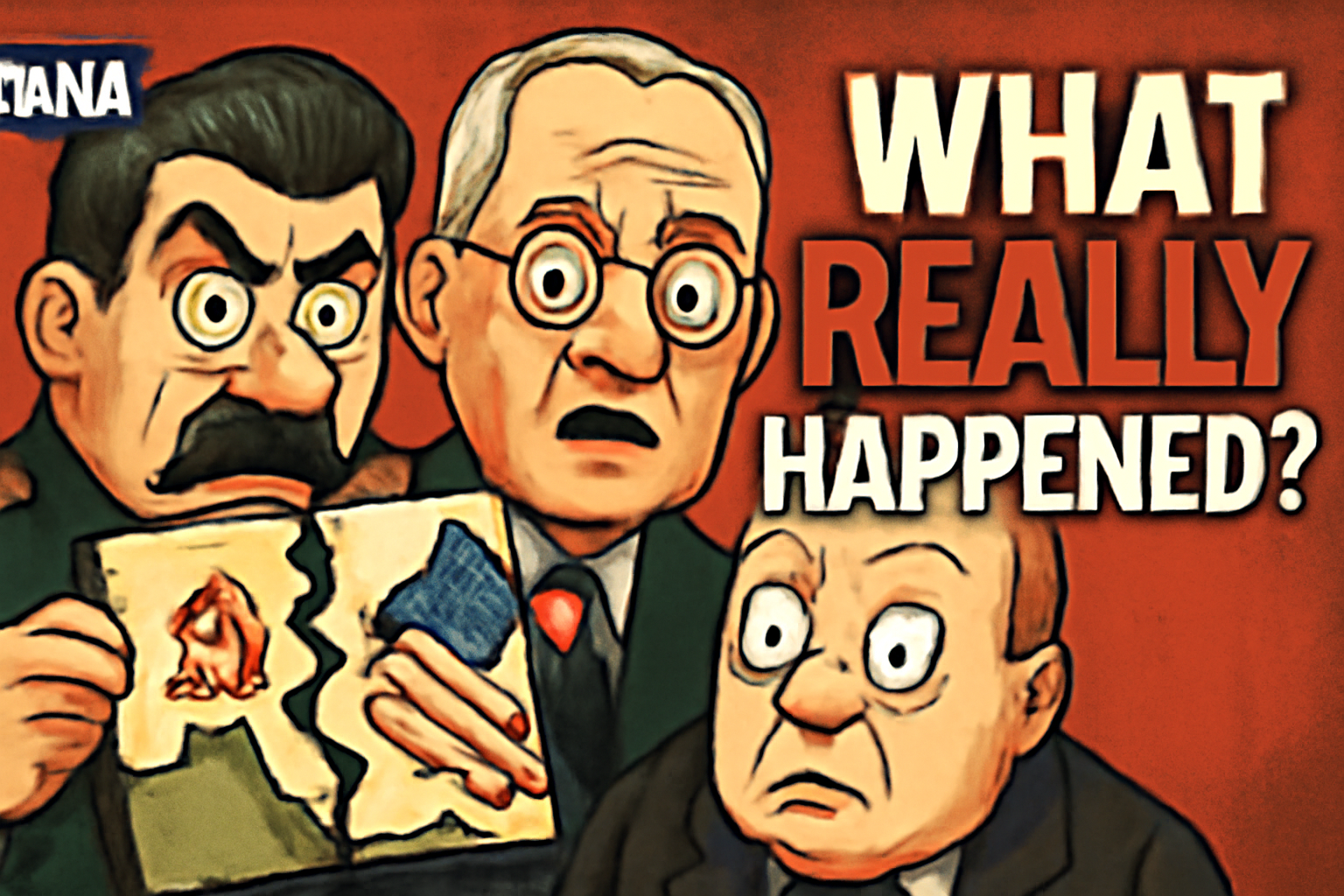Potsdam Conference 1945: When Allies Became Enemies
Picture this: three powerful leaders – Churchill, Truman, and Stalin – in the lavish Cecilienhof Palace in Potsdam, July 1945. They smile for the cameras, but behind those smiles lies a cold, deadly power game. Nazi Germany was defeated, but the war wasn’t over yet – Japan was still fighting. While the world celebrated victory, the Allies were preparing to divide the spoils and start what would become the Cold War.
Dividing Germany: Allies or Rivals?
At the conference held from July 17 to August 2, the three victorious powers negotiated the fate of defeated Germany. The agreement was clear: Germany would be divided into four occupation zones, demilitarized, and denazified. But reality was harsher – France played only a minor role, and Berlin lay in ruins. Although the plan was to treat Germany as one economic unit, that never happened. The division that would split Europe into two worlds began.
The Atomic Bomb and the Cold War
While the leaders negotiated, Truman received news of the first successful atomic bomb test in New Mexico. He didn’t wait – he ordered the use of the bomb on Japan. But it wasn’t just about ending the war with Japan – Truman knew this was a signal to Stalin: America had a power no one could ignore. The Soviet Union, meanwhile, didn’t want to be left in the shadow. Stalin was already planning to turn the USSR into a global superpower.
The Brutal Reality of Expulsions and Unfulfilled Peace Treaties
The Potsdam Agreement envisioned orderly and humane expulsions of Germans from Eastern Europe. But reality was bloody and cruel – millions were expelled, many did not survive. Although a final peace treaty with Germany was planned, it never happened. Only in 1990, after decades of division and tension, did Germany receive a legally binding agreement that ended the postwar status.
Why Does This Matter Today?
The Potsdam Conference was not just a historical event – it was the start of a new era. An era of division, distrust, the Cold War, and conflicts that shaped the world we know today. As we remember those days, we should ask ourselves: how much have we learned from the past? Are we ready to face the dangers of division and mistrust again?
If this story felt like a spy thriller, you’re not far off. History is full of drama, and Potsdam was its climax. Now, take a look at your favorite series and movies – maybe they were inspired by these cold smiles and secret deals.
And hey, if you have a favorite historical moment that shocked or angered you, share it in the comments. Let the conversation begin – history is way more fun when we all question it together!









